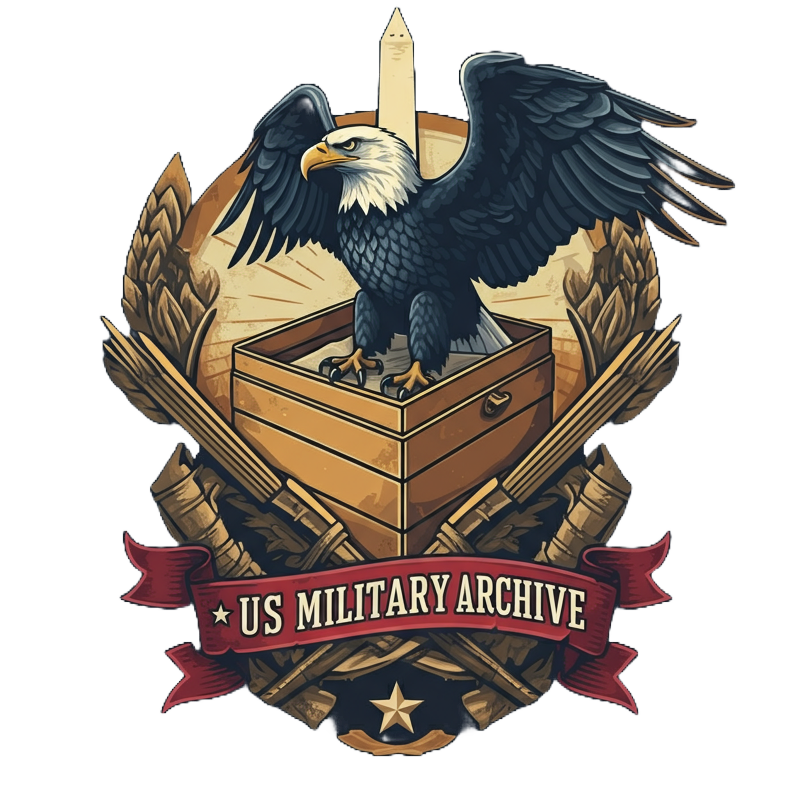Archive Text
Introduction: An Unapologetic Instrument of War
In the pantheon of military aviation, where sleek lines, supersonic speeds, and technological stealth often capture the imagination, there exists a machine of starkly different character. It is a brutish, uncompromising, and unapologetically functional aircraft, conceived not for the elegant dance of air superiority but for the brutal, close-quarters reality of ground combat. The Fairchild Republic A-10 Thunderbolt II, known almost universally by its unofficial, yet far more fitting, moniker—the "Warthog"—is a testament to a singular, unwavering design philosophy: build an aircraft that can absorb tremendous punishment, remain in the fight, and deliver devastating firepower in direct support of the troops below. It is not an aircraft; it is a flying gun platform, a titanium-clad guardian angel whose thunderous arrival has become one of the most feared sounds to its enemies and one of the most welcome to its allies. This document serves as an exhaustive archival record of its genesis, its unique engineering, its storied combat history, and its enduring, often contentious, legacy. It is the story of a machine built for a specific, ugly purpose, a purpose it has fulfilled with unmatched resolve for half a century.
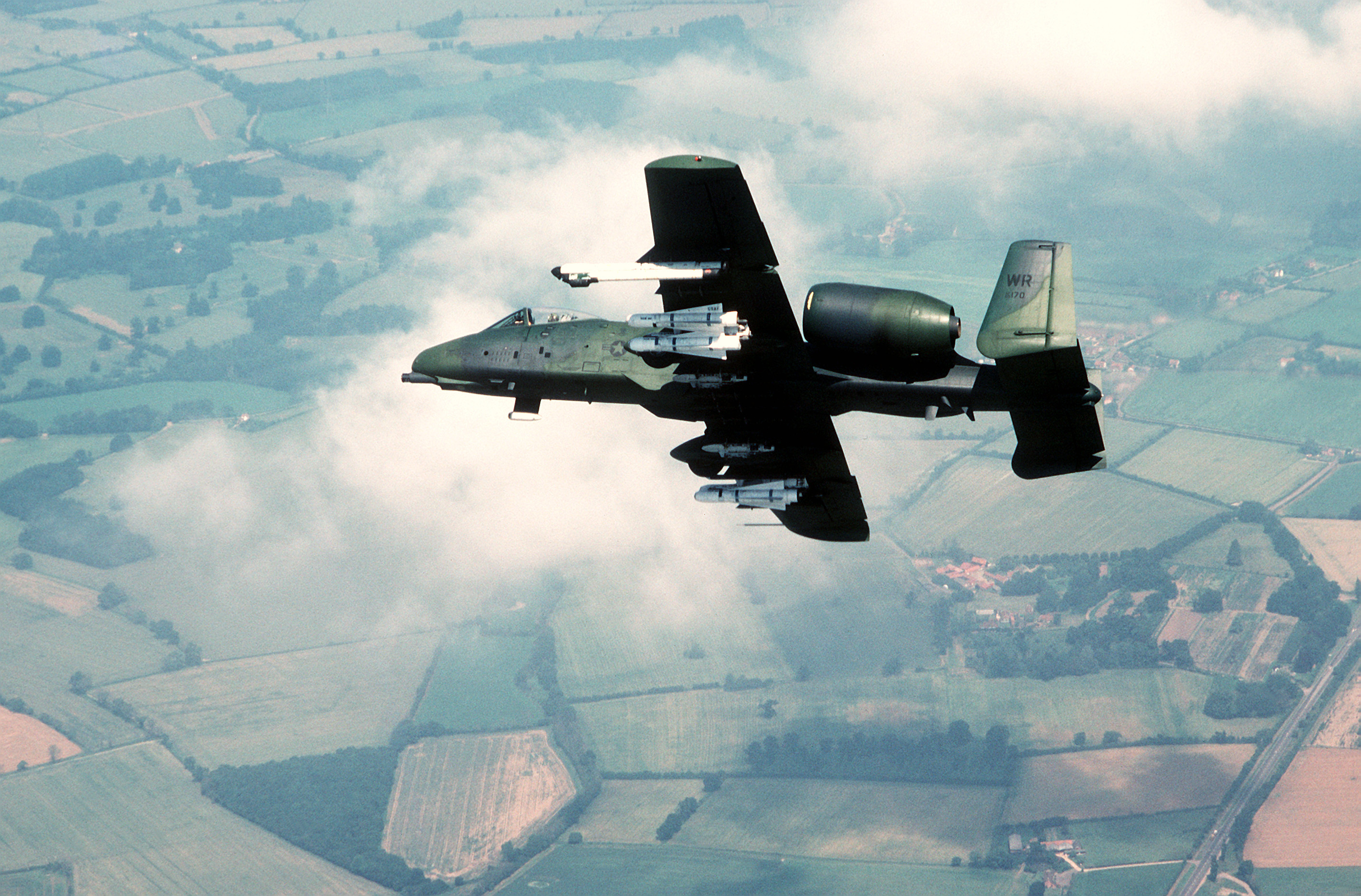
Chapter I: Genesis of a Ground-Pounder
The A-10 was not born from a desire for technological prestige, but from the harsh realities of two distinct, yet converging, military challenges: the frustratingly intimate warfare of Vietnam and the existential dread of a potential armored conflict in Europe.
The Lessons of Vietnam: The Failure of Fast-Movers
The Vietnam War served as a crucible for American airpower doctrine, and in the crucible, the prevailing theories were found wanting. The U.S. Air Force, heavily invested in high-performance interceptors like the F-100 Super Sabre and multirole fighter-bombers like the F-4 Phantom II, discovered these assets were profoundly ill-suited for the Close Air Support (CAS) mission. CAS is an art form of violence, demanding low-altitude, low-speed maneuverability to visually identify and engage targets entangled with friendly forces. The "fast-movers" were simply too fast. Their pilots, streaking over the jungle canopy at 400-500 knots, had mere seconds to acquire, verify, and attack a target. This high speed increased the risk of fratricide and limited their effectiveness against concealed, fleeting enemy positions. Furthermore, these complex, high-maintenance jets were highly susceptible to damage from the ubiquitous 12.7mm and 14.5mm anti-aircraft guns that saturated the battlefield.
In stark contrast, the most revered CAS aircraft of the conflict was the Douglas A-1 Skyraider. A piston-engine, propeller-driven "relic," the Skyraider could carry an immense ordnance load, loiter over the battlefield for hours, and its straight-wing design allowed it to maneuver tightly at low speeds. Its rugged airframe could absorb an astonishing amount of punishment and still bring its pilot home. The A-1 became the gold standard for CAS, and its performance highlighted a glaring hole in the modern jet inventory. The Air Force needed a jet-powered Skyraider: an aircraft with the survivability and loiter time of the old prop plane, but with the enhanced firepower and performance of a modern platform.
The European Fulcrum: The Warsaw Pact Iron Tide
Simultaneously, NATO strategists were haunted by the prospect of a massive Warsaw Pact invasion of Western Europe. The prevailing Soviet military doctrine emphasized overwhelming force, envisioning thousands of T-55, T-62, and the newer T-64 tanks pouring through corridors like the Fulda Gap in Germany. NATO's ground forces, while qualitatively strong, would be numerically overwhelmed. The task of blunting this armored spearhead would fall heavily on airpower. The problem was that no existing aircraft was specifically designed for this "tank-busting" role. The Air Force needed a cost-effective, mass-producible aircraft that could fly low under hostile radar, destroy main battle tanks with a powerful cannon, and survive the dense network of Soviet mobile air defenses like the ZSU-23-4 "Shilka."
The A-X Program and the Fly-Off
These dual requirements coalesced into the Attack-Experimental (A-X) program, initiated in 1966. In 1970, the USAF released a highly specific Request for Proposal that was revolutionary in its focus on low-tech, high-survivability solutions. It called for a maximum speed of only 450 knots, a takeoff distance of under 4,000 feet, a massive 16,000-pound external payload, and a target unit cost of just $1.4 million. Crucially, it specified the integration of a devastatingly powerful 30mm rotary cannon.
Two companies were selected to build prototypes: Northrop and Fairchild Republic. The result was a head-to-head competition between the Northrop YA-9A and the Fairchild Republic YA-10A.
The YA-9A was a more conventional design, featuring a shoulder-mounted wing, a single vertical stabilizer, and engines mounted in pods under the wing roots, similar to the S-3 Viking. The YA-10A, in contrast, was radical. Its engines were mounted high on the rear fuselage, its wings were low-mounted and straight, and it featured a distinctive twin-tail.
The fly-off, conducted throughout 1972, revealed the superiority of the Fairchild Republic design for the CAS mission. While both aircraft met the basic performance requirements, the YA-10A demonstrated better low-speed handling and was a more stable gun platform. Its most decisive advantage, however, was survivability. The high-mounted engines of the YA-10A were shielded from ground fire by the wings and tail, were less likely to ingest debris on rough fields, and their wide separation meant a single hit could not disable both. The YA-9A's engines were seen as far more vulnerable. On January 18, 1973, the Air Force announced the YA-10A as the winner. It was officially christened the Thunderbolt II, a proud nod to Republic's legendary P-47 Thunderbolt of WWII. To the pilots and crews, however, its ungainly, brutish appearance earned it the name that would define its legacy: the "Warthog."
Chapter II: Forged in Titanium - The Engineering Philosophy of the A-10
The A-10 is a masterclass in purpose-built engineering. Every design choice can be traced back to the core tenets of lethality and survivability. It is a machine stripped of all non-essential elements, a pure instrument of its intended function.
2.1 The GAU-8/A Avenger: A Gun with Wings
The General Electric GAU-8/A Avenger is the soul of the A-10. It is a seven-barreled Gatling cannon of immense scale, measuring 19 feet from the rear of its ammunition drum to the tip of its muzzle. The complete weapon system weighs 4,021 pounds (1,828 kg), accounting for roughly 16% of the aircraft's empty weight. The cannon is so central to the design that the A-10's front landing gear is offset to the starboard side by 12 inches to allow the firing barrel, which is always the one in the 9 o'clock position, to sit on the aircraft's exact centerline.
The Avenger fires enormous 30x173mm cartridges from its massive, 5-foot diameter ammunition drum, which holds 1,174 rounds. The gun fires at a fixed rate of 3,900 rounds per minute (65 rounds per second). The standard "combat mix" consists of a 5:1 ratio of PGU-14/B Armor-Piercing Incendiary (API) rounds to PGU-13/B High-Explosive Incendiary (HEI) rounds. The PGU-14/B API is the tank-killer. Its core is a sub-caliber penetrator made of depleted uranium (DU), a metal 2.5 times denser than steel. Upon impact, the DU dart's kinetic energy is so immense it punches through heavy armor; its pyrophoric nature causes it to ignite after penetration, incinerating the interior of the target vehicle. The PGU-13/B HEI rounds are designed for "soft" targets like trucks, structures, and personnel.
The recoil force of the GAU-8 is a staggering 10,000 pounds-force (45 kN), a force greater than the thrust produced by one of the A-10's engines. To counter the nose-down pitching moment this creates, the engines are mounted with a slight upward cant. The sound of the gun is a low-frequency, visceral roar, famously known as "BRRRRT," a sound that has become a symbol of overwhelming air support.
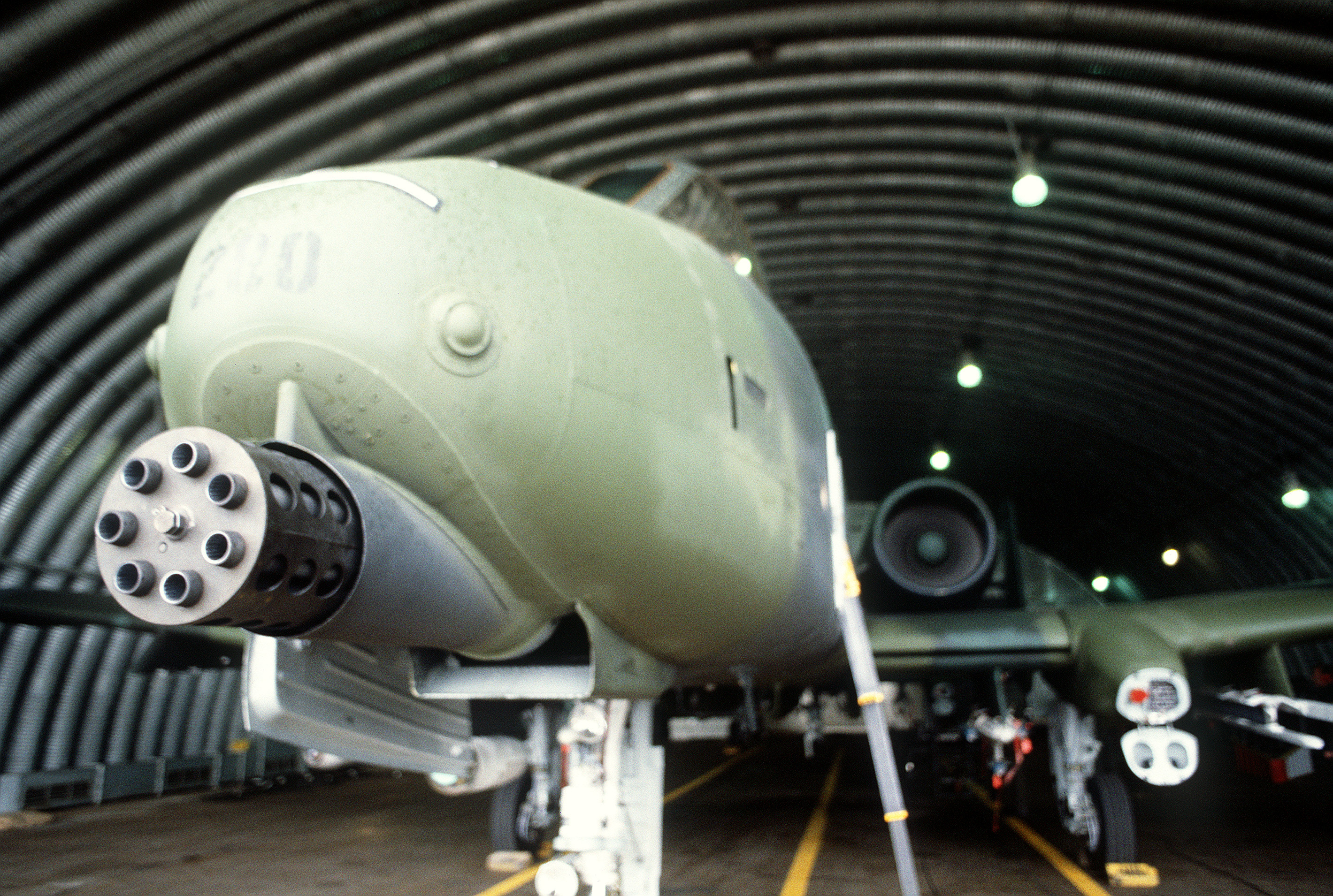
2.2 The Fortress Cockpit and Redundancy Philosophy
The A-10 was designed to bring its pilot home, even from the heart of a heavily defended area. The core of this philosophy is the "titanium bathtub." This is a 1,200-pound (540 kg) cockpit enclosure made of ballistic titanium armor, ranging in thickness from 0.5 to 1.5 inches. It is designed to withstand direct hits from armor-piercing 23mm cannon shells and offer protection against fragments from larger 57mm shells. The front windscreen and canopy are constructed from multi-layer, bullet-resistant acrylic.
This layered defense is underpinned by a deep commitment to redundancy. The A-10 has two independent, widely separated hydraulic systems to power its flight controls. If both systems are lost to combat damage, the pilot can engage the Manual Reversion Control System. This is a purely mechanical system of steel cables that connect the stick and rudder pedals directly to the control surfaces, allowing the pilot to fly and land the aircraft without any hydraulic power. This backup system, a feature unheard of in modern fighters, has saved numerous A-10s.
The fuel system is similarly robust. The two main fuel tanks are self-sealing and located within the fuselage, where they are protected by the wings. They are filled with reticulated polyurethane foam, which prevents an explosion if the tank is ruptured. Fuel lines are also self-sealing and are routed to avoid critical areas.
2.3 Airframe and Aerodynamics: Built for the Deck
The A-10's distinctive shape is a direct result of its mission profile. The large, straight, high-aspect-ratio wing is an aerodynamic masterpiece for low-speed flight. It generates enormous lift, allowing the A-10 to perform incredibly tight turns at low altitudes—essential for maneuvering in valleys or re-engaging targets near friendly troops. This design also gives it excellent Short Take-Off and Landing (STOL) capabilities, enabling it to operate from damaged runways or unimproved forward airstrips.
The wings feature exceptionally large ailerons, which provide crisp roll authority. These ailerons are also split, allowing them to function as "decelerons." By deflecting both the top and bottom surfaces apart, they act as powerful airbrakes, allowing the pilot to rapidly bleed off speed for a strafing run without altering the aircraft's pitch. The large twin vertical stabilizers and rudders not only provide excellent stability but also serve to mask the infrared signature of the engines from the side and provide redundant control authority if one is damaged. The landing gear is over-engineered and robust, with low-pressure tires, allowing it to handle the punishment of unprepared landing surfaces.
2.4 The TF34 Powerplant: Reliable and Resilient
The A-10 is powered by two General Electric TF34-GE-100 high-bypass turbofan engines, each producing 9,065 pounds of thrust. The choice of a high-bypass engine was deliberate. They are highly fuel-efficient at the low altitudes and speeds where the A-10 operates, contributing to its impressive loiter time. They also have a lower exhaust temperature than a traditional turbojet, reducing their infrared signature.
Their placement is a work of genius. Mounted high on pylons, they are protected from ground fire by the wings and tail. Their wide separation makes a dual-engine loss from a single missile hit nearly impossible. The aircraft is fully capable of flying and landing on a single engine. This high mounting also prevents the engines from ingesting rocks, dirt, and other foreign object debris (FOD) during rough-field operations, a constant problem for low-slung engines.
Chapter III: The Warthog's Tusks - Ordnance and Modernization
While the GAU-8 is its signature weapon, the A-10's true lethality comes from its ability to carry a vast and varied arsenal on its 11 hardpoints (eight on the wings, three on the fuselage), with a maximum ordnance load of 16,000 pounds.
3.1 A Versatile Arsenal
The A-10's weapons load can be tailored for any ground-attack scenario:
Precision Missiles: The AGM-65 Maverick air-to-ground missile is a staple, with variants using electro-optical, infrared, and laser guidance to destroy tanks and hardened structures from a standoff range.
Precision Bombs: The modernized A-10C can carry a full suite of smart bombs, including laser-guided bombs (LGBs) like the GBU-12 Paveway II (500-lb) and GPS-guided Joint Direct Attack Munitions (JDAMs) like the GBU-38 (500-lb) and GBU-31 (2,000-lb).
General Purpose Bombs: A full range of "dumb" bombs from the 500-lb Mk 82 to the 2,000-lb Mk 84.
Rockets: Pods of Hydra 70mm rockets for saturating an area target.
Cluster Munitions: CBU-series (Cluster Bomb Units) for attacking vehicle formations or personnel in the open.
Self-Defense: AIM-9M Sidewinder heat-seeking missiles are carried for self-defense against enemy aircraft.
Countermeasures: ALQ-131 or ALQ-184 electronic countermeasures (ECM) pods are carried to jam enemy radar, supplemented by a robust system of chaff and flare dispensers to defeat radar- and infrared-guided missiles.
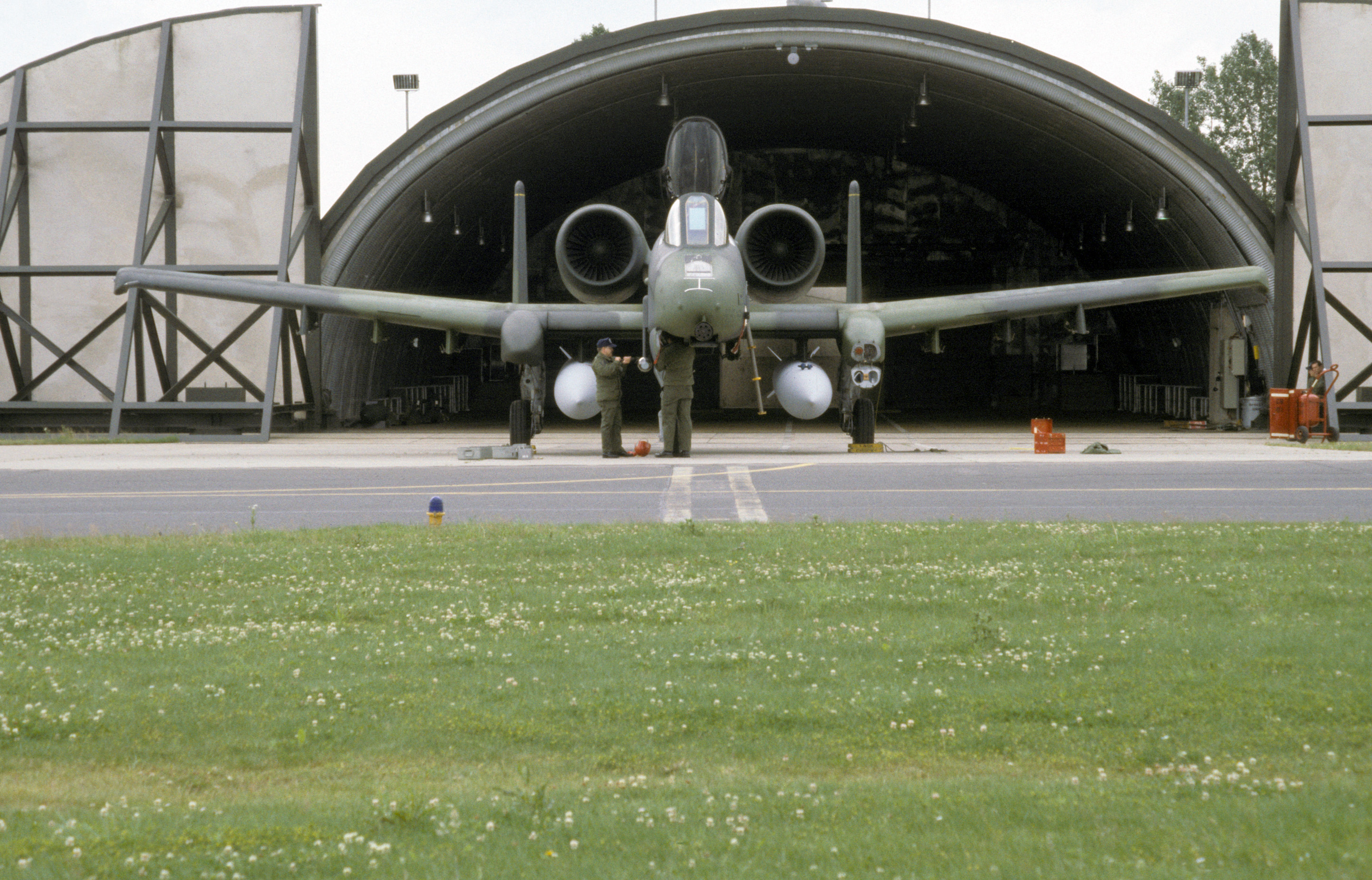
3.2 The A-10C "Precision Engagement" Upgrade
To remain relevant on the 21st-century battlefield, the A-10 fleet underwent the "Precision Engagement" program, upgrading them to the A-10C standard. This was the most significant modernization in the aircraft's history. The vintage analog "steam gauge" cockpit was replaced with a modern "glass cockpit" featuring two 5x5-inch multi-function color displays (MFCDs). A Hands-On-Throttle-And-Stick (HOTAS) system was installed, allowing the pilot to manage sensors and weapons without taking their hands off the controls.
The game-changing addition was the integration of targeting pods like the Northrop Grumman LITENING or the Lockheed Martin Sniper XR. These pods, mounted on an external pylon, contain powerful electro-optical and forward-looking infrared (FLIR) cameras with high magnification, along with a laser designator. This revolutionized A-10 tactics. Instead of having to fly low to visually identify a target, an A-10C pilot can now orbit at a much safer altitude (above 20,000 feet), use the pod to find, identify, and track targets, and then precisely guide laser or GPS bombs onto them. This dramatically increased pilot survivability and weapon accuracy while still allowing the A-10 to get "low and slow" when the situation demanded it.
Further sustainment efforts, most notably a massive re-winging program contracted to Boeing, have replaced the original wings on a large portion of the fleet. These new wings are designed to last for 10,000 flight hours without a major depot inspection, ensuring the A-10's airframe can remain structurally sound well into the 2030s and beyond.
Chapter IV: A Legacy Written in Combat
The A-10 was built for a war that never happened, but it has written its legacy in the fires of nearly every major American conflict since its introduction.
Operation Desert Storm (1991): This was the Warthog's coming-out party. A-10s flew over 8,100 sorties with a mission-capable rate of 95.7%. They were credited with destroying over 900 Iraqi tanks, 2,000 military vehicles, and 1,200 artillery pieces. They also proved devastatingly effective in the "SCUD hunting" role, seeking out and destroying Iraqi mobile missile launchers.
The Balkans (1990s): During Operations Deliberate Force (Bosnia) and Allied Force (Kosovo), A-10s flew in treacherous weather and mountainous terrain, hunting Serbian armor and artillery. They were a key asset for Combat Search and Rescue (CSAR), escorting helicopters to rescue downed pilots.
Operation Enduring Freedom & Iraqi Freedom (2001-Present): The counter-insurgency (COIN) wars in Afghanistan and Iraq became the A-10's defining modern conflict. Here, its strengths were perfectly matched to the mission. Its long loiter time was invaluable, allowing a single A-10 to provide protective overwatch for a ground unit for hours. Its low-speed handling allowed pilots to visually confirm targets, an essential capability in complex urban firefights. It was in Iraq in 2003 that Captain Kim Campbell, after her A-10 was heavily damaged by AAA over Baghdad, lost all hydraulics and flew the aircraft home for over an hour on manual reversion, creating an enduring legend of the Warthog's toughness.
Operation Odyssey Dawn (Libya, 2011) & Inherent Resolve (Iraq/Syria, 2014-Present): The A-10 continued to prove its worth against non-state actors. In the campaign against ISIS, A-10Cs were workhorses, delivering precision ordnance and using the GAU-8 to devastate ISIS vehicle-borne IEDs (VBIEDs) and fortified positions.
Chapter V: The "Hog" Driver - Culture and Training
To fly the A-10 is to belong to a unique and fiercely proud sub-culture within the Air Force. A-10 pilots, often called "Hog Drivers," are defined by their intimate connection to the ground component. Their entire mission revolves around protecting the soldier, Marine, or special operator on the ground. This creates a deep bond and a different mindset from that of a fighter pilot focused on air-to-air combat.
The training pipeline for A-10 pilots is rigorous and specialized, with most of it centered at Davis-Monthan Air Force Base in Arizona. Trainees learn not just how to fly the aircraft, but how to think like a ground-attack pilot—mastering low-level navigation, threat recognition, and the intricate procedures of coordinating with Joint Terminal Attack Controllers (JTACs) on the ground. The community is known for its intense advocacy for the aircraft, with pilots past and present often being the most vocal proponents for keeping the Warthog in service, sometimes putting them at odds with Air Force leadership.
Chapter VI: The Unending Battle - The Politics of Retirement
Ironically, the A-10's greatest threat has often come not from enemy fire, but from budget battles within the Pentagon. For decades, factions within the Air Force have sought to retire the A-10 fleet. The arguments are consistent:
Vulnerability: Critics argue the slow, non-stealthy A-10 would be "a fourth-generation aircraft in a fifth-generation world," and would be quickly shot down in a conflict with a peer adversary like China or Russia who possess advanced Integrated Air Defense Systems (IADS).
Cost: Maintaining a single-mission fleet is expensive, and the Air Force would prefer to invest those funds into more flexible, multi-role platforms.
Replacement: The Air Force officially maintains that the F-35 Lightning II can perform the CAS mission adequately, bringing the advantages of stealth and advanced sensors to the fight.
This position has been met with fierce and sustained resistance from a powerful coalition of ground forces, veterans' organizations, and a bipartisan group of lawmakers in the U.S. Congress. Their counter-arguments are equally passionate:
Irreplaceable Capability: No other aircraft combines the A-10's payload, loiter time, survivability, and the psychological impact of its GAU-8 cannon.
Cost-Effectiveness: The A-10's cost per flight hour is a fraction of the F-35's, making it a more suitable platform for the high-volume, persistent presence required in COIN environments.
The Flaws of the Replacement: Supporters argue the F-35 has a smaller gun with very limited ammunition, cannot loiter for long periods, and its pilot lacks the direct, unobstructed view of the battlefield provided by the A-10's bubble canopy.
This political tug-of-war has resulted in a repeating cycle where the Air Force announces retirement plans, only for Congress to insert language into the National Defense Authorization Act (NDAA) prohibiting the divestment of the fleet. This stalemate has, for now, preserved the Warthog, but its long-term future remains a subject of intense and perennial debate.
Conclusion: An Indelible Legacy in Titanium and Fire
The Fairchild Republic A-10 Thunderbolt II is an anomaly in the age of digital, multi-role, and stealthy airpower. It is a living fossil from an era of single-minded design, an aircraft that carries its purpose on its sleeve—or rather, in its heavily armored nose. Its legacy is not measured in speed records or altitude ceilings but in the number of tanks destroyed, enemy positions silenced, and, most importantly, friendly lives saved.
The Warthog is a machine built for the ugliest aspects of war, a flying embodiment of grim determination. It is a symbol of the sacred promise between the airman in the sky and the soldier on the ground. For over four decades, its silhouette and the thunderous roar of its cannon have meant the difference between life and death on the battlefield. Whether its service life is extended for another decade or it is finally sent to the boneyard, the A-10 has carved its name into the annals of military history not as a thing of beauty, but as an unparalleled protector—the unkillable, unyielding, and unforgettable Guardian of the Ground.
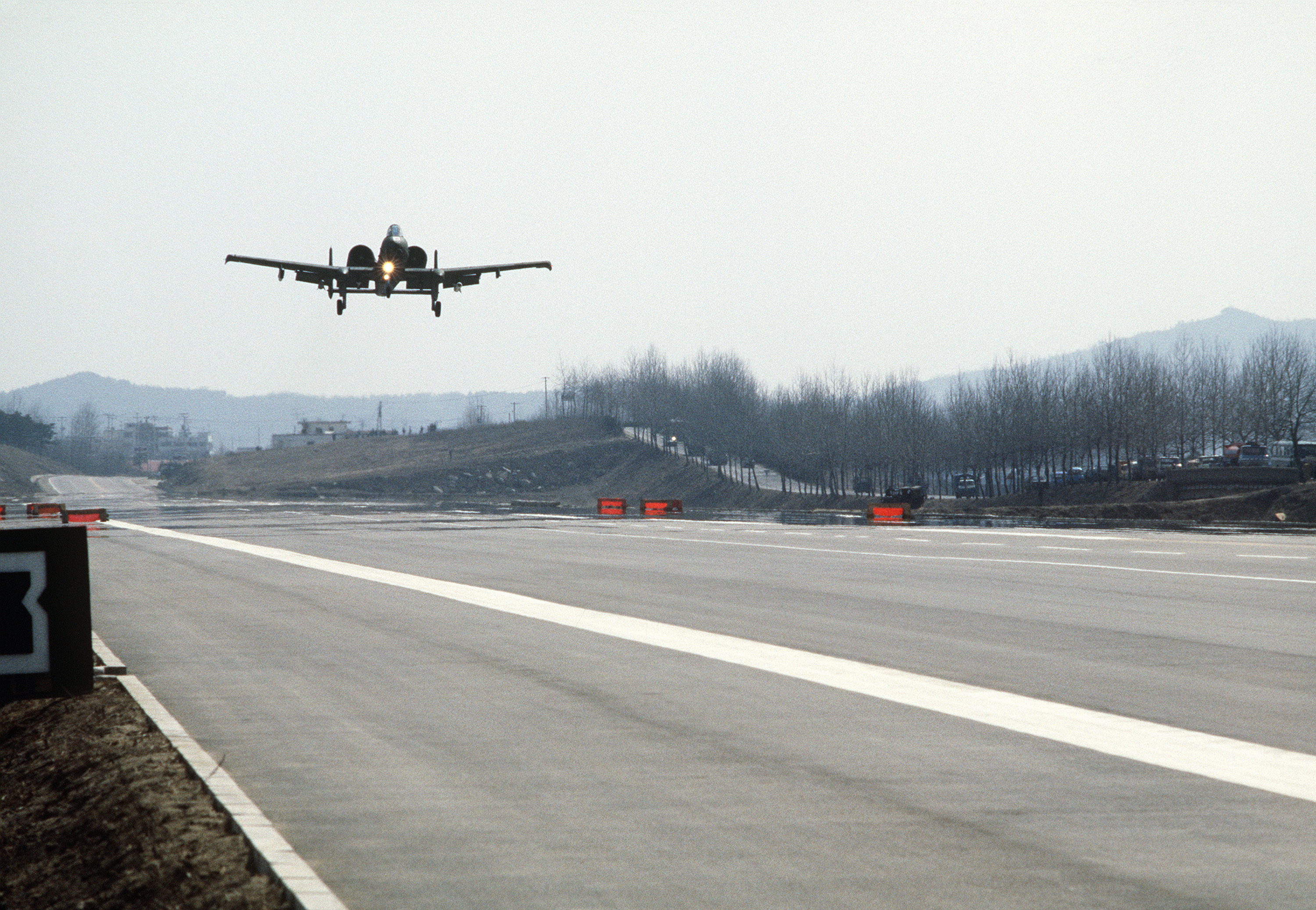
Files
There are no files available.

